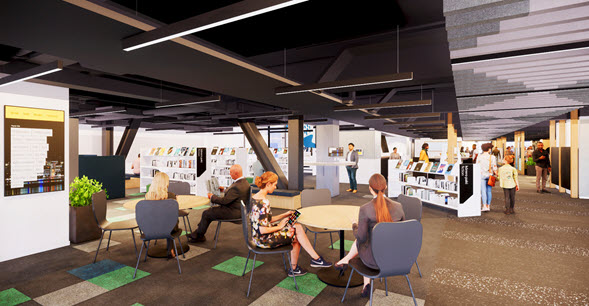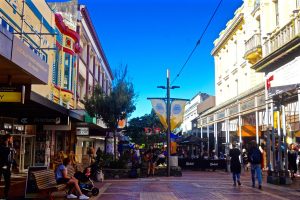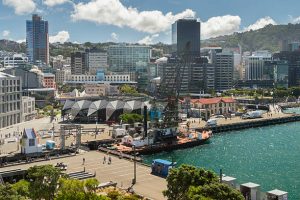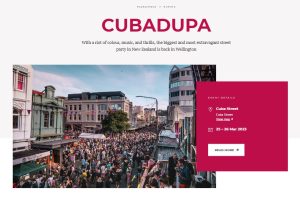Various organizations sought to create a public library in Wellington from 1840 onwards. In 1893, The first public library ran by Council was opened. This was on the junction of Wakefield and Mercer Streets.
This structure was built by the famous architect William Crichton. In 1940, the library closed. In the year 1943, the structure was finally destroyed.

This resulted in the occupation of the area by the Municipal Building belonging to the City Council. They are still in use to this day.
In 1940, a new library was built on the corner of Harris and Mercer streets. In 1993, this structure was transformed into the City Gallery Wellington. On the corner of Mercer and Victoria Streets, near Civic Square, a new central branch library opened in 1991.
The new building was designed by Ian Athfield from Athfield Architects and erected by Fletcher Development and Construction.
The library building, which was decommissioned in 2019, had three levels. Fiction, the Sound and Vision Centre, the Young Adult and Children’s collections, and the major circulation desks were all on the ground level.
The sciences, humanities, arts, music, and literature collections were all situated on the first level.
The second level housed the travel, history, and New Zealand reference collections. On a mezzanine floor accessible from the main entrance but distinct from the main library, a café and conference rooms were located.
A public parking lot was located on the basement level.
As an earthquake danger, the high-level portico bridge between the library and the WCC service centre building was destroyed in 2013.
Accolades
The central library building has received two New Zealand architectural awards: the Carter Holt Harvey Awards’ Environmental Award in 1992 and the New Zealand Institute of Architects’ National Award for Architecture in 1993.
The Library received an excellence award from the New Zealand Music Board in 2006 for their “Sing along with Stu” story-time program.
The New Zealand Institute of Architects awarded Te Awe Library on Brandon Street the 2021 Wellington Architecture Award.
Unprecedented Closure of The Library
After obtaining advice from experts that the building had structural weaknesses that imply it may not function well in the case of a large earthquake, Wellington City Council opted to close the Central Library on short notice on March 19, 2019.
In September 2020, Heritage New Zealand requested that the building be designated as a category 1 historic place, citing concerns that it may be destroyed.
This would not prevent destruction, but it would assist Wellington City Council in making decisions.
A month later, the Council stated that rather than demolish the library, it will invest $179 million to restore and modernize it, but in May 2021, the Council revealed that it was examining alternative possibilities. In September 2021,
Wellington City Council stated that it would be decommissioning the Central Library’s furnishings, either storing them for four years or recycling furniture that couldn’t be utilized elsewhere.
The structure will be reinforced and modernized, and the layout will be changed. The top two stories will be expanded, and base isolators will be constructed beneath the structure.
Arapaki Manners Library (opened in May 2019 in Manners Street), He Matapihi Molesworth Library (opened in October 2019 within the National Library in Molesworth Street), and Te Awe Library (launched in Brandon Street) are three pop-up replacement libraries in central Wellington (opened in July 2020). None of these, however, have the Central Library’s reading rooms or hours of operation.
The 400,000 items in Wellington Central Library’s collection have been moved to Te Ptaka, a new collection and distribution hub in Johnsonville.
Wellington City Libraries Branches.
The public has access to 14 branches of Wellington City Libraries. Three of them are in central Wellington, while the others are in the suburbs:
- Arapaki Manners Library
- Wadestown Library.
- Johnsonville Library
- Newtown Library
- He Matapihi Molesworth Library
- Cummings Park (Ngaio) Library
- Island Bay Library
- Karori Library
- Mervyn Kemp
- Miramar Library
- Te Awe Library
- Khandallah Library
- Brooklyn Library
A housebound service is also available, in which volunteers deliver books to individuals who are unable to visit a library.
The library maintained a mobile service from 1947 to 2006 that delivered books to towns without a branch library or restricted public transportation, but this service was discontinued in 2006 owing to poor usage and expensive expenses.
Rennovation of Te Matapih
In October 2020, the Council agreed to remediate Te Matapihi to the greatest degree (base-isolation), and in the 2021-31 Long-Term Plan consultation, the public was given the chance to weigh in on this financing as well as other city objectives.
The four concepts that will drive the design for modernising Te Matapihi within the needed remediation plans were accepted by the Council on April 15, 2021.
This includes referring to the Central Library as Te Matapihi ki te Ao Nui (Te Matapihi), the name given to it by the Mori Language Commission when it was first established. It literally means ‘to open windows to the big vast globe.’








